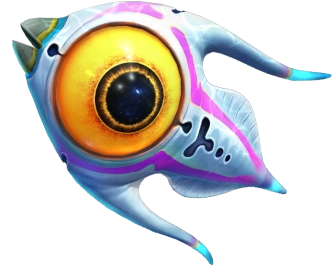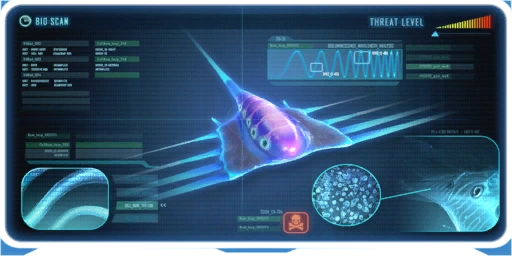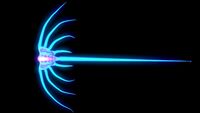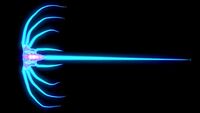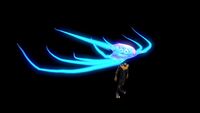The Jellyray is a passive fauna species that lives primarily in the Mushroom Forest and Deep Grand Reef.
Appearance
The Jellyray possesses a translucent, constantly glowing body. It has a long, thin tail and eight, smaller undulating tentacles protruding from each side of its body. The main body glows a violet hue, with bright pink patterns on its back, the rest of the creature glows a light blue colour.
The Jellyray has six circles of various sizes on each side of its torso. These circles could possibly be its eyes, however, it is unknown what their purpose is.
Behavior
Jellyrays aimlessly glide around, dragging their tentacles behind them when doing so and emitting high pitched cries.
They are curious about light, and can usually be seen investigating any nearby light sources, The curious behaviour fades away after inspecting the light source.
Energy Value
Data Bank Entry
|
This species has adapted to low-light environments with a translucent, luminescent body. 1. Luminescent Body: 2. Light-Sensitivity: Assessment: Inedible |
Gallery
Trivia
- The sounds of the Jellyray were created from wolf howls.[1]
- The Jellyray is a relatively close relative of the Ghostray which is very closely related to the Crimson Ray. These three are also more distantly related to the Rabbit Ray. This is confirmed by the PDA datalogs, which states that they all share a common ancestor.
- The data bank entry also suggests that Crimson Rays and Ghostrays had a predatory ancestor.
- Jellyrays possess highly poisonous flesh and as such, they have few natural predators - a trait shared with the other ray-species and probably developed by their common ancestor.
- Jellyrays are bottom-dwellers, preferring to glide over the seabed. This suggests they're detritivores - surviving from organic waste that settles down on the seabed. This is further supported by the databank entry of the Spadefish.
References
| Fauna living within the Crater | |
|---|---|
| Carnivores | |
| Herbivores | |
| Scavengers & Parasites | |
| Leviathans | |
| Extinct | |
| Other Entities | |
